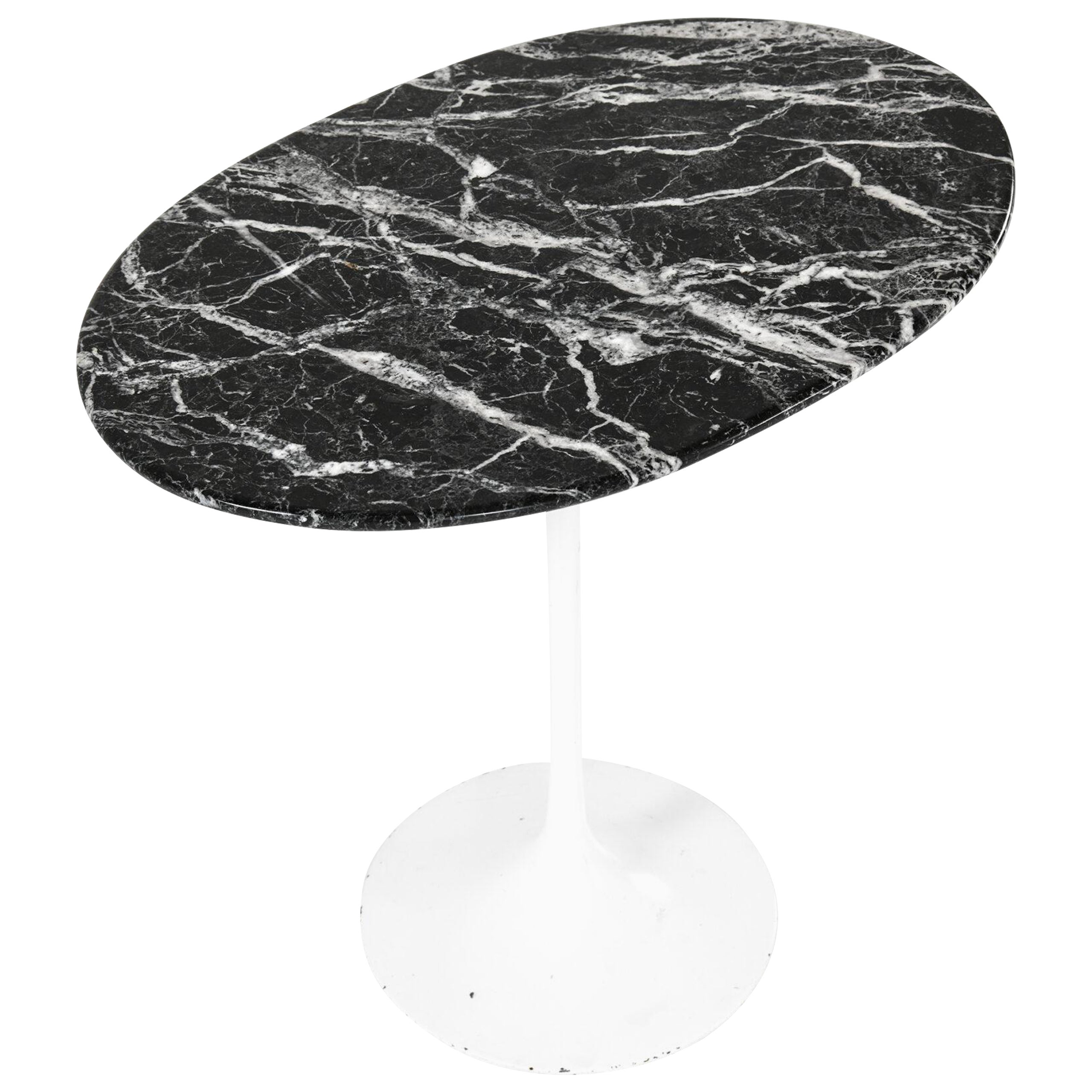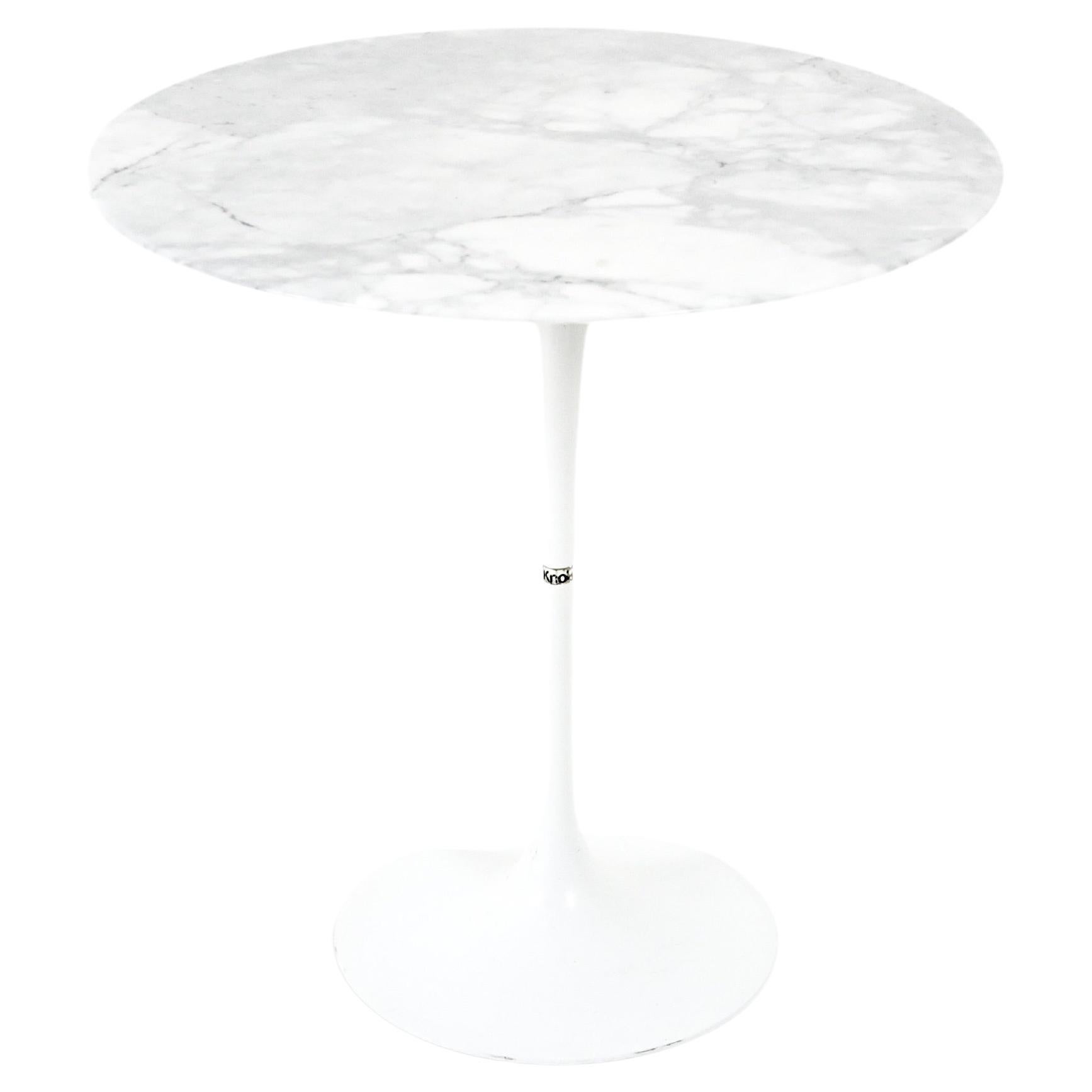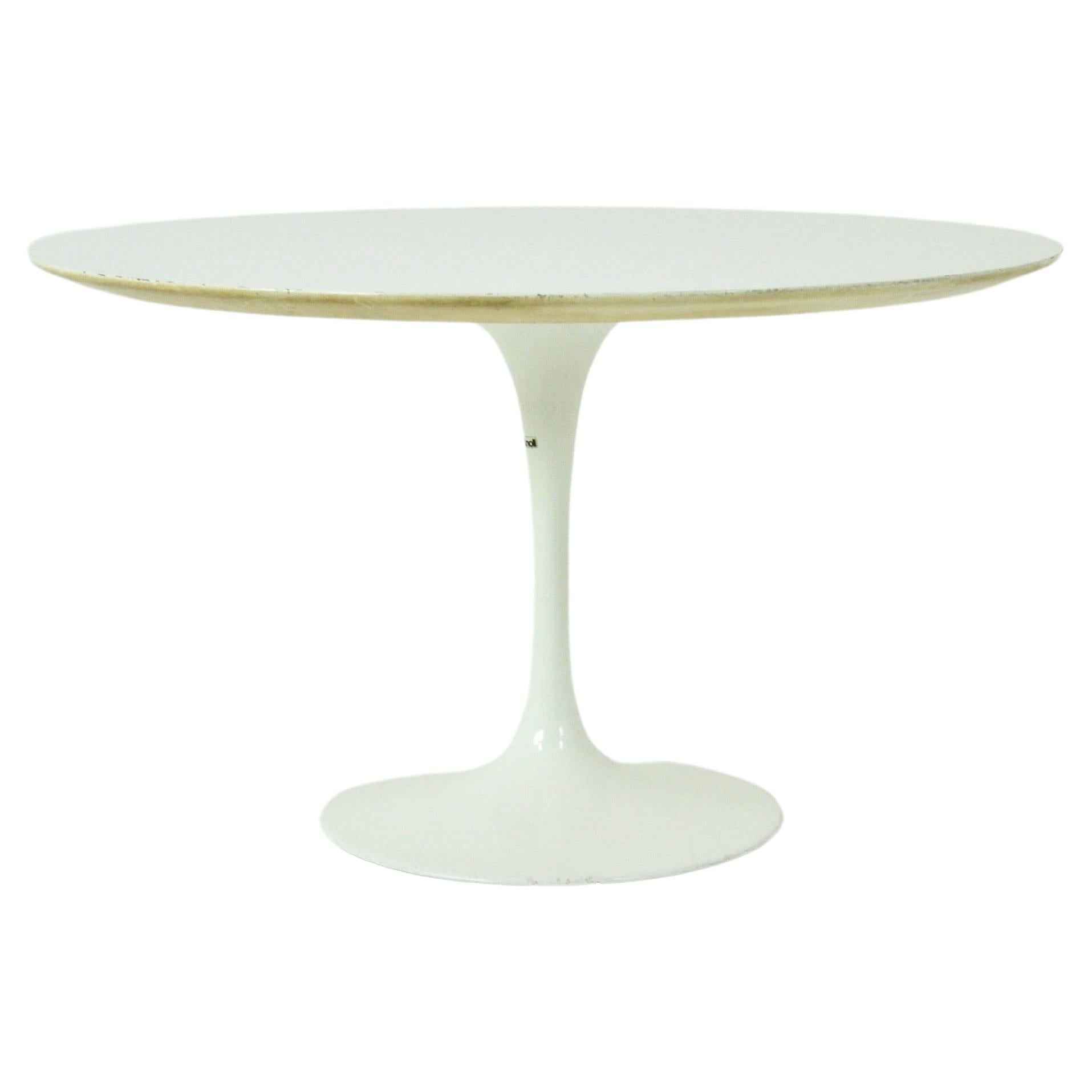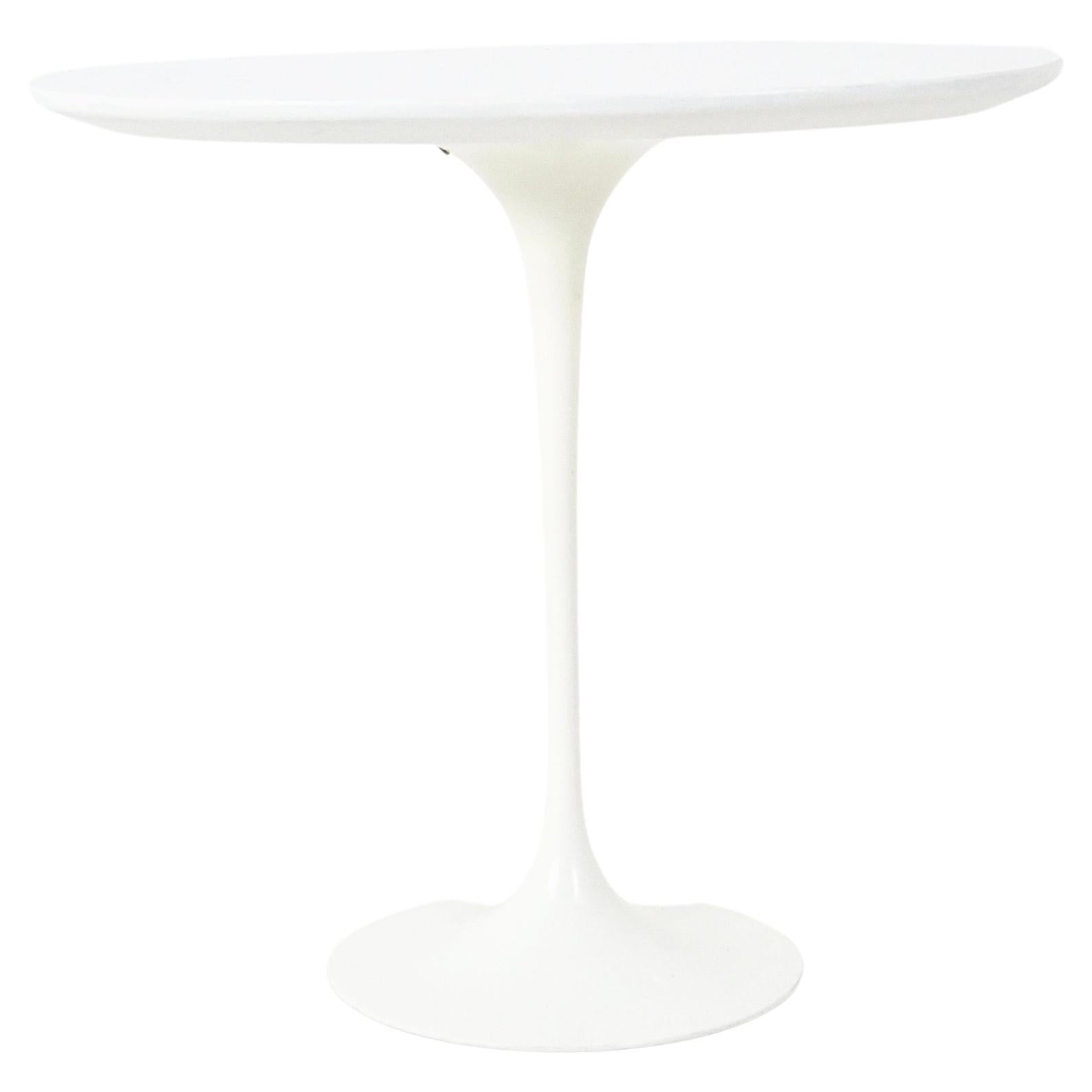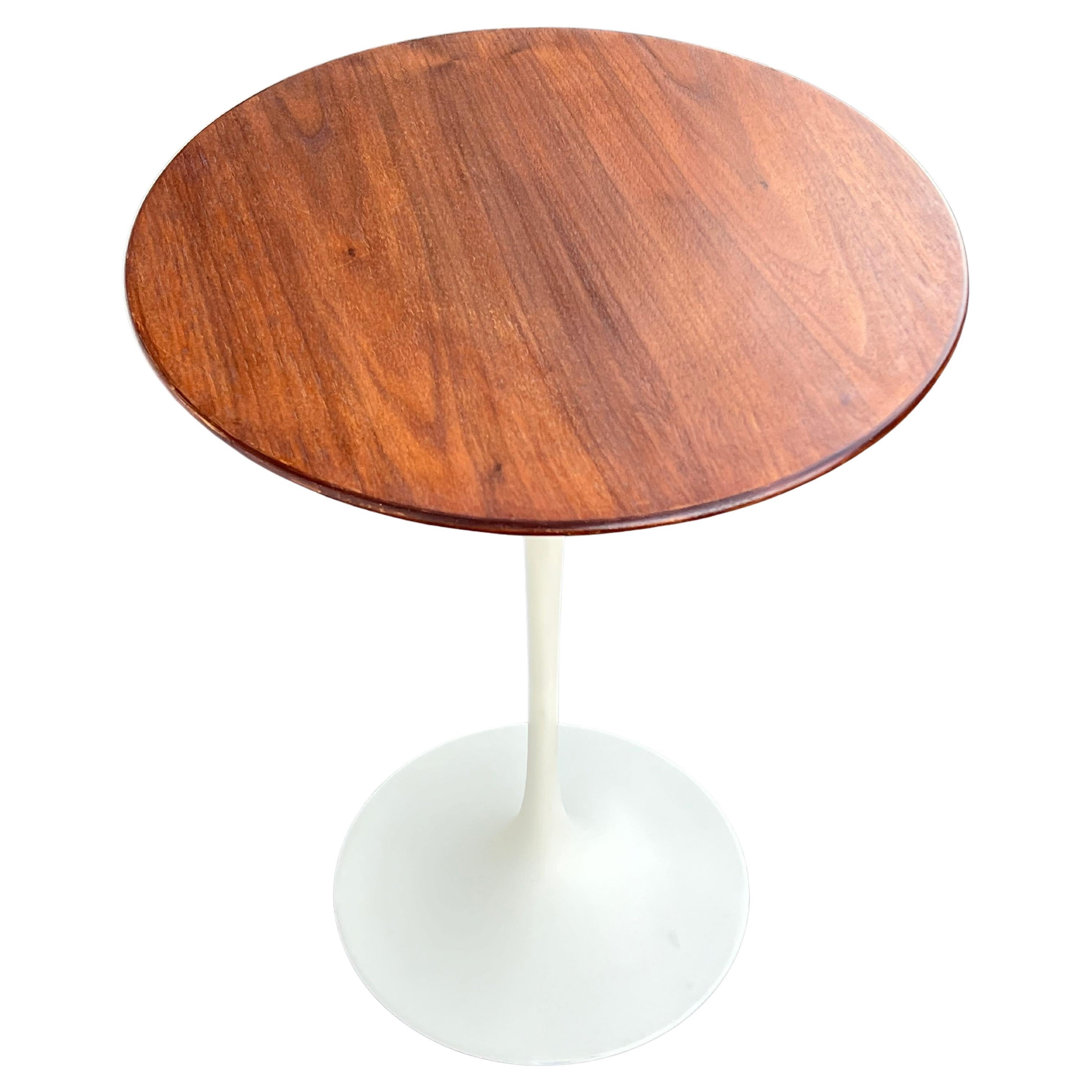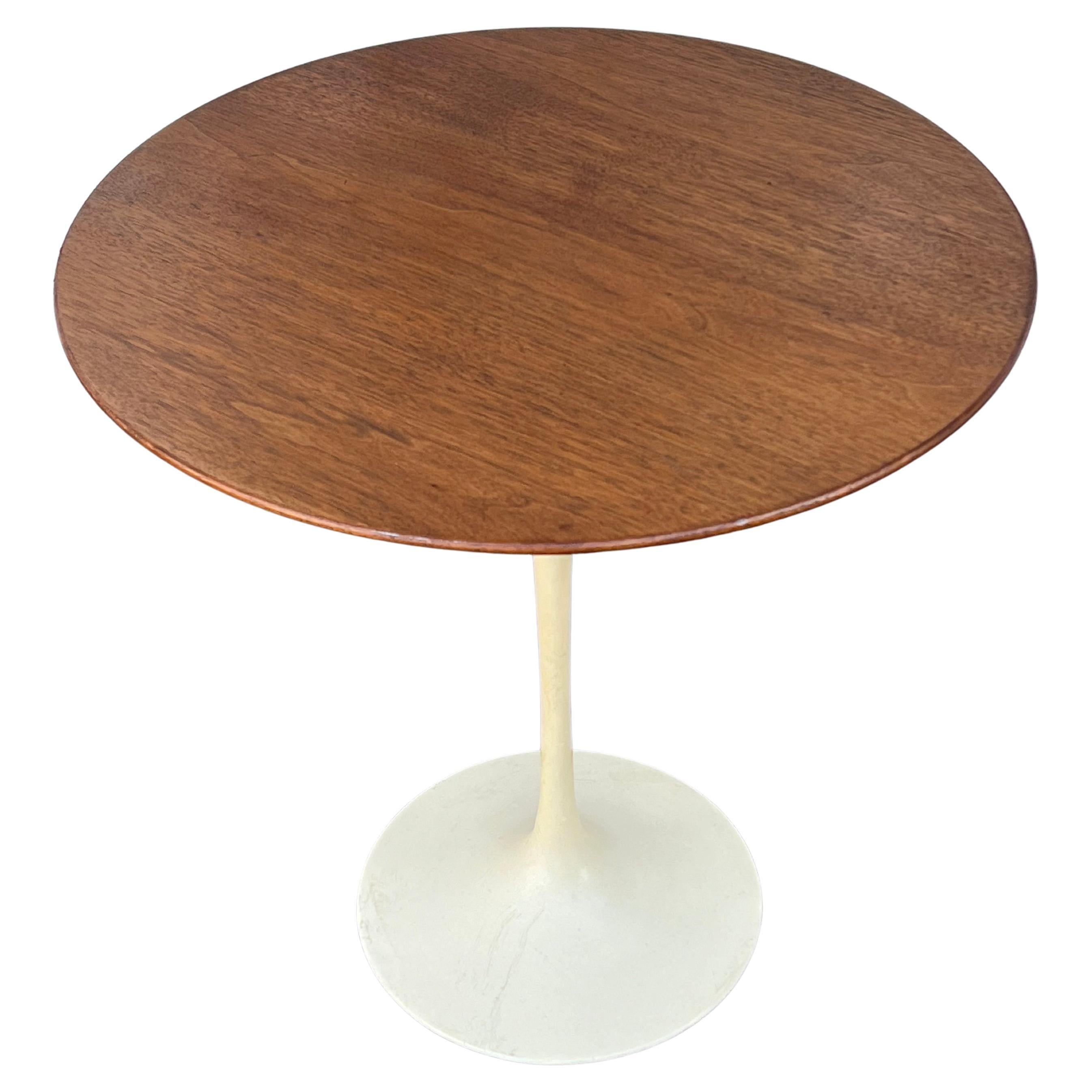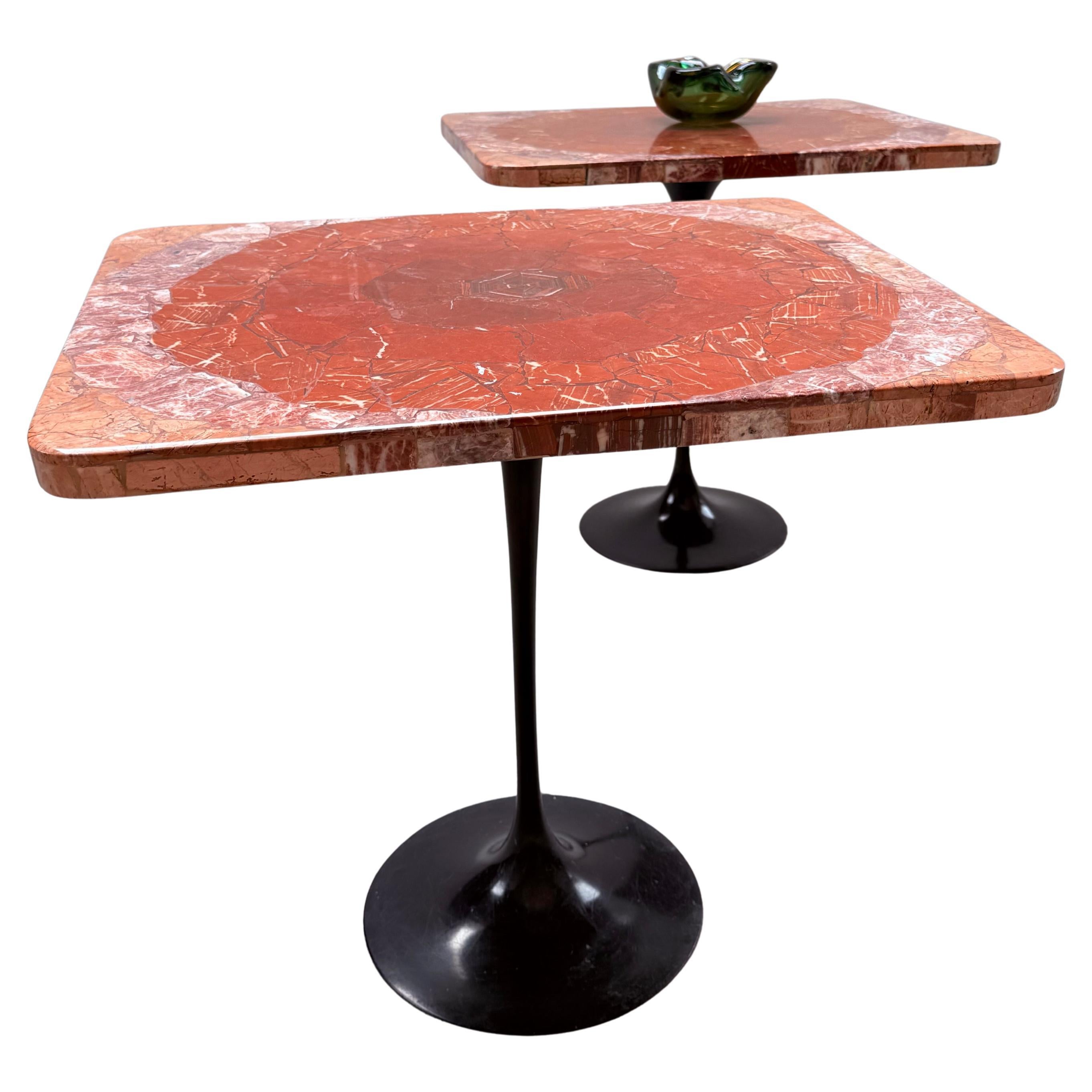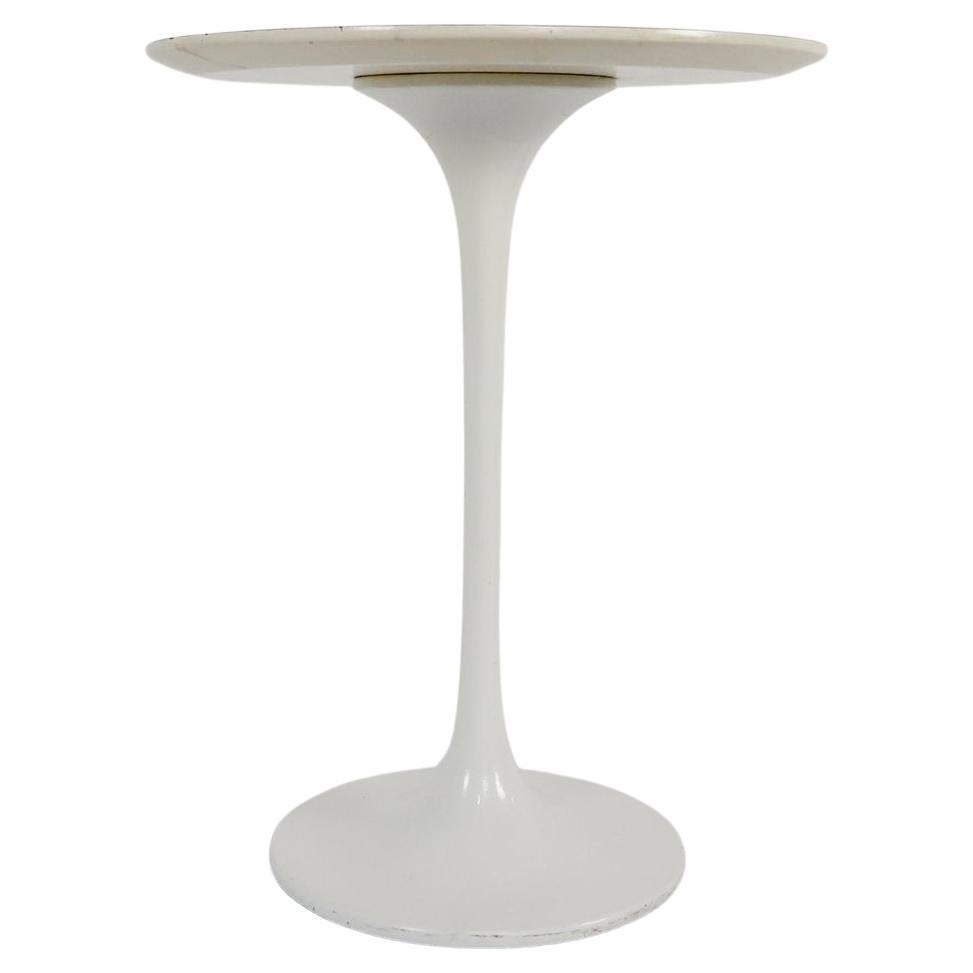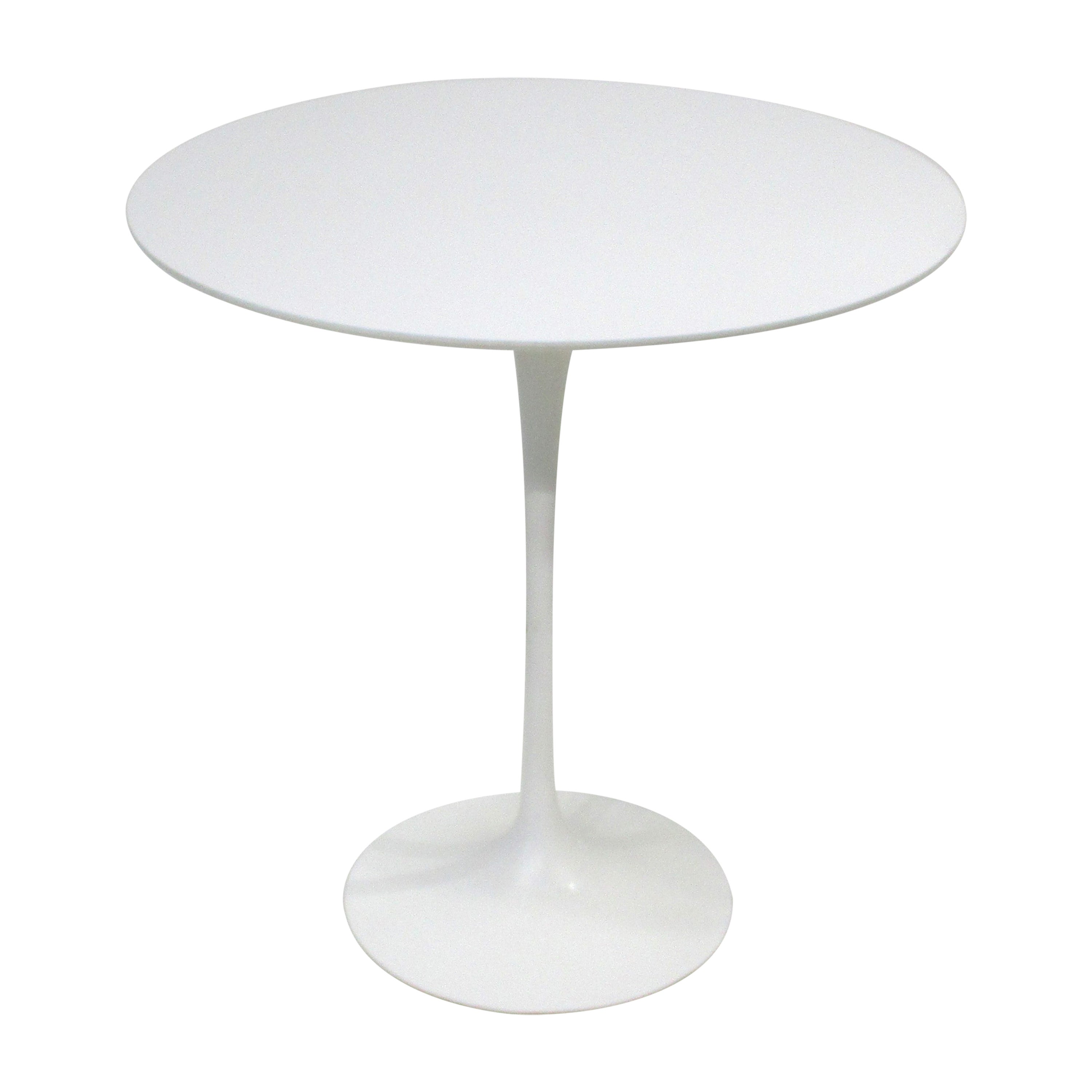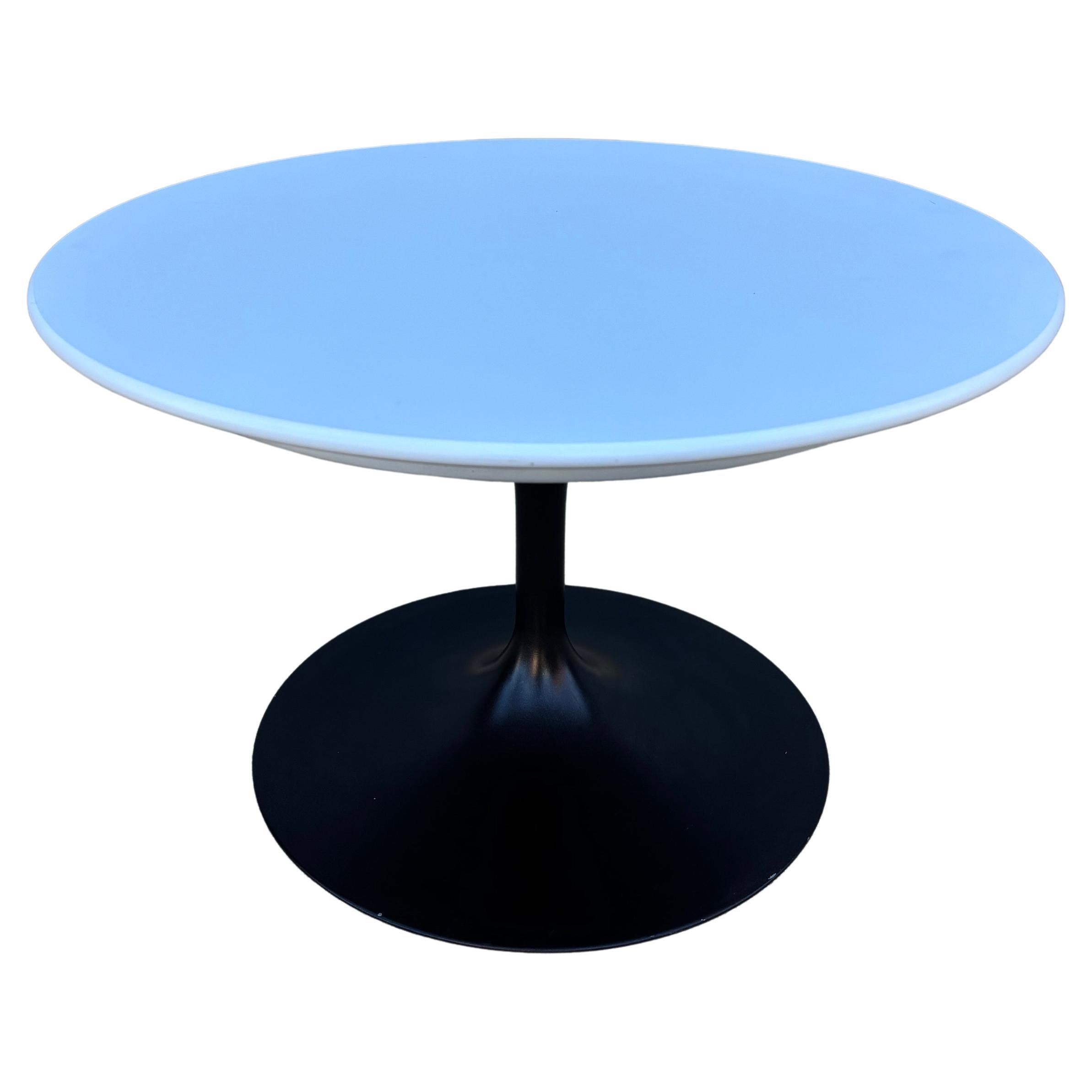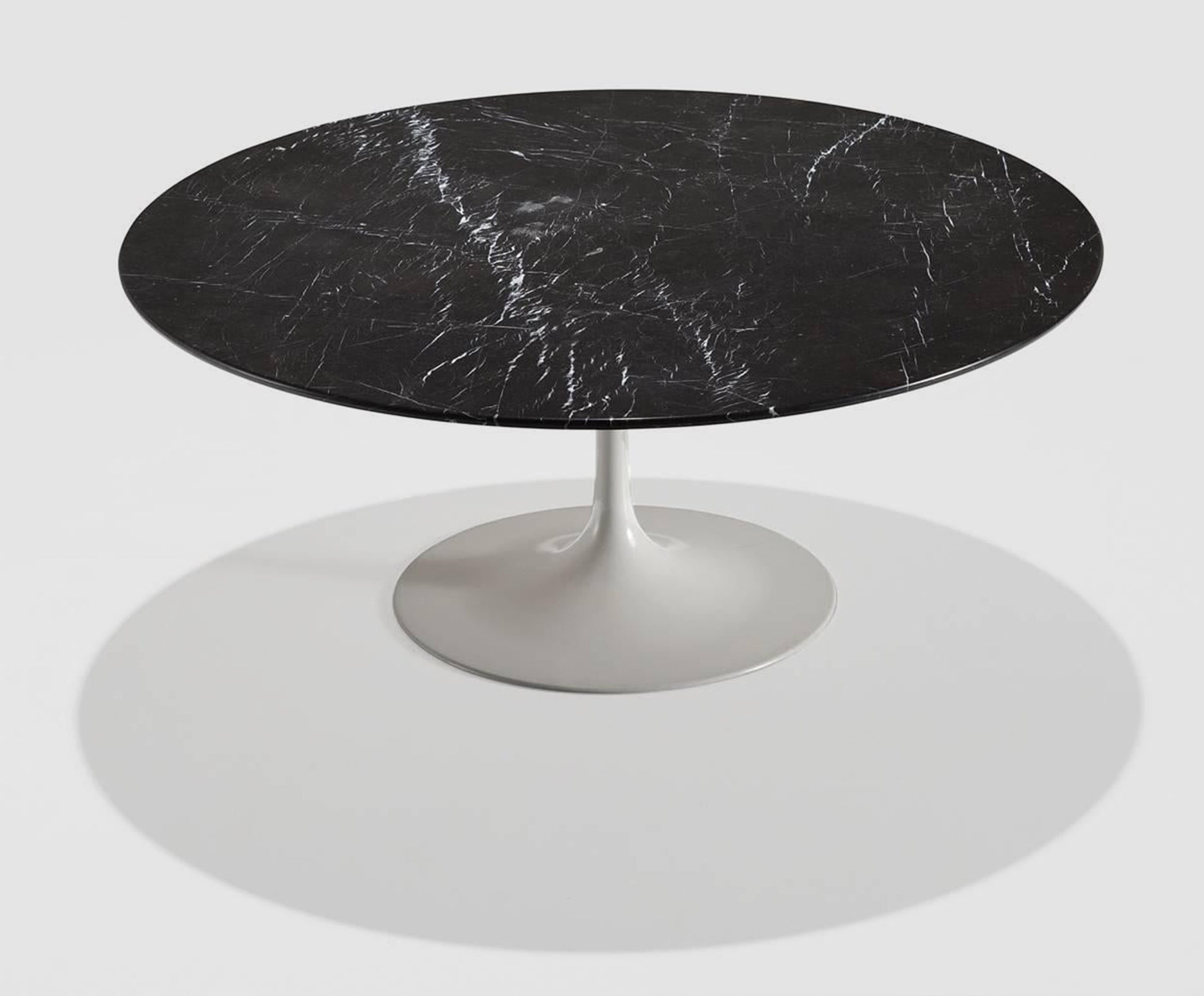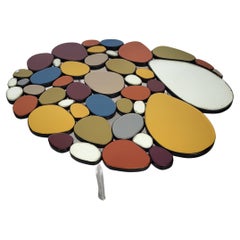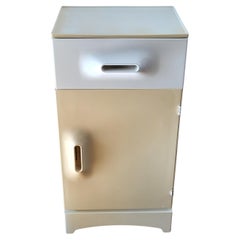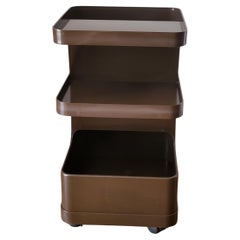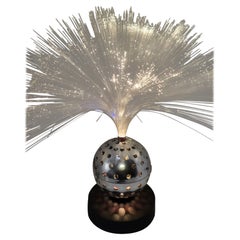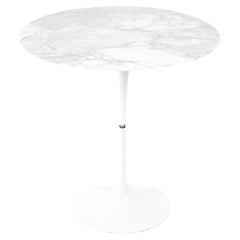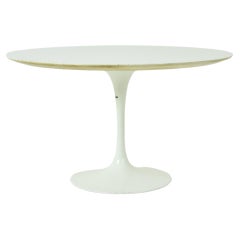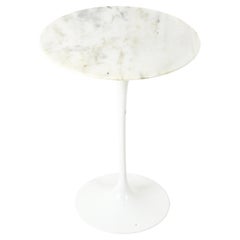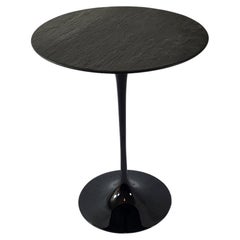
Table Tulipe by Eero Saarinen , Knoll Inc. Knoll International 1957 model 160 MC
View Similar Items
Table Tulipe by Eero Saarinen , Knoll Inc. Knoll International 1957 model 160 MC
About the Item
- Creator:Florence Knoll (Designer),Eero Saarinen (Artist)
- Design:Saarinen Pedestal TableSaarinen Pedestal Series
- Dimensions:Height: 20.48 in (52 cm)Diameter: 16.15 in (41 cm)
- Style:Futurist (Of the Period)
- Materials and Techniques:
- Place of Origin:
- Period:
- Date of Manufacture:inconnue
- Condition:Excellent état la table est parfaite, et le plateau en ardoise n'a aucune tache ni rayure.
- Seller Location:London, GB
- Reference Number:1stDibs: LU8954237354802
Pedestal Table
Finnish-American architect and furniture maker Eero Saarinen (1910–61) declared that he “wanted to clear up the slum of legs” crowded beneath tables. Enter his Pedestal collection, which Knoll launched in 1958. The collection included armchairs, stools and tables of various sizes all balanced on a single supporting leg.
Saarinen got his start in furniture as a student at Michigan’s Cranbrook Academy of Art, where his father, architect Eliel Saarinen, was director. Some of Eero’s earliest work was designing furniture for Kingswood, a Cranbrook school for girls that opened in 1931. The pieces included a table with four gathered legs in order to make room for both people and chairs’ legs.
At Cranbrook Academy, Saarinen met Florence Knoll, who would become a lifelong friend and professional partner, especially when she was leading the Knoll furniture company. He also met fellow designer Charles Eames, and — with support from Ray Eames — they created the molded plywood Organic chair, which placed first in the 1940 Organic Design in Home Furnishings competition organized by the Museum of Modern Art in New York. As with Saarinen’s future practice, the Organic chair was emblematic of a design approach that was informed by a consideration of the human body as well as the possibilities of new machine processes.
Although America’s involvement in World War II disrupted plans to manufacture the Organic chair, Saarinen continued to explore organic shapes in industrial design. His interest in using seamless plastic forms was clear with his Pedestal series, but the technology was not advanced enough for their stability. Instead, the Pedestal table and its accompanying Tulip armchairs and armless chairs comprised cast-aluminum bases. Each table, stool and chair was crafted with a single, tapered cylindrical leg that descends to a base that flares into a circle, giving the illusion of being one piece. Like his Gateway Arch in St. Louis, the series’ pieces appear to float, and although austere in silhouette, they reflect intense attention to engineering.
The Pedestal table was released with several additional options, including marble and wood veneer for its round and oval tops for dining, side and coffee tables. Because of their modest footprint on a room and streamlined design, these tables can harmonize with nearly any interior style. The design’s status as a mid-century modern classic has inspired numerous imitators, but Saarinen’s original Pedestal table — still manufactured by Knoll — maintains the grace and quality that distinguishes it from the rest.
Florence Knoll
Architect, furniture designer, interior designer, entrepreneur — Florence Knoll had a subtle but profound influence on the course of mid-century American modernism. Dedicated to functionality and organization, and never flamboyant, Knoll shaped the ethos of the postwar business world with her skillfully realized office plans and polished, efficient designs for sofas, credenzas, desks and other furnishings.
Knoll had perhaps the most thorough design education of any of her peers. Florence Schust was orphaned at age 12, and her guardian sent her to Kingswood, a girl’s boarding school that is part of the Cranbrook Educational Community in suburban Detroit. Her interest in design brought her to the attention of Eliel Saarinen, the Finnish architect and head of the Cranbrook Academy of Art.
Saarinen and his wife took the talented child under their wing, and she became close to their son, the future architect Eero Saarinen. While a student at the academy, Florence befriended artist-designer Harry Bertoia and Charles and Ray Eames. Later, she studied under three of the Bauhaus masters who emigrated to the United States. She worked as an apprentice in the Boston architectural offices of Walter Gropius and Marcel Breuer; Ludwig Mies van der Rohe taught her at the Illinois Institute of Technology.
In 1941, she met Hans Knoll, whose eponymous furniture company was just getting off the ground. They married in 1946, and her design sense and his business skills soon made Knoll Inc. a leading firm in its field. Florence signed up the younger Saarinen as a designer, and would develop pieces by Bertoia, Mies and the artist Isamu Noguchi.
Florence Knoll's main work came as head of the Knoll Planning Group, designing custom office interiors for clients such as IBM and CBS. The furniture she created for these spaces reflects her Bauhaus training: the pieces are pure functional design, exactingly built; their only ornament from the materials, such as wood and marble. Her innovations — the oval conference table, for example, conceived as a way to ensure clear sightlines among all seated at a meeting — were always in the service of practicality.
Since her retirement in 1965, Knoll received the National Medal of Arts, among other awards; in 2004 the Philadelphia Museum of Art mounted the exhibition “Florence Knoll: Defining Modern” — well deserved accolades for a strong, successful design and business pioneer. As demonstrated on these pages, the simplicity of Knoll’s furniture is her work’s great virtue: they fit into any interior design scheme.
Find vintage Florence Knoll sofas, benches, armchairs and other furniture on 1stDibs.
More From This Seller
View All1990s Belgian Futurist Side Tables
Metal, Chrome
Vintage 1960s French Space Age Side Tables
Plastic
Vintage 1970s French Space Age Side Tables
Plastic
Vintage 1970s German Space Age Table Lamps
Metal
1990s Belgian Futurist Sofa Tables
Aluminum
Late 20th Century French Modern End Tables
Metal
You May Also Like
Vintage 1950s American Mid-Century Modern Side Tables
Marble, Metal
Vintage 1960s Italian Mid-Century Modern Tables
Marble, Aluminum
Vintage 1960s Central American Mid-Century Modern Tables
Aluminum
Vintage 1960s Italian Mid-Century Modern Tables
Marble, Aluminum
Vintage 1960s Central American Mid-Century Modern Tables
Aluminum
Vintage 1960s American Mid-Century Modern Side Tables
Steel
